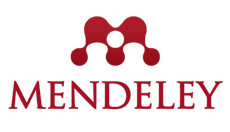Peningkatan Prestasi Belajar Matematika dengan Problem Based Learning
DOI:
https://doi.org/10.57176/jn.v2i2.55Keywords:
prestasi belajar , pembelajaran matematika , model problem based learningAbstract
Penelitian ini membahas tentang peningkatan prestasi belajar matematika siswa kelas 3 sekolah dasar menggunakan model pembelajaran problem based learning. Penelitian ini bertujuan untuk menguji peningkatkan prestasi belajar peserta didik melalui model Problem Based Learning (PBL) pada pembelajaran matematika materi sudut kelas 3 SD N Deroduwur. Berdasarkan hasil observasi ditemukan bahwa prestasi belajar matematika materi sudut masih belum optimal dikarenakan sebelumnya pembelajaran menggunakan moda daring karena pandemi covid-19. Metode penelitian yang digunakan dalam penelitian penelitian tindakan kelas model Suharsimi Arikunto dengan tahapan yang meliputi kegiatan perencanaan, pelaksanaan tindakan, observasi, dan refleksi. Penelitian tindakan kelas yang digunakan adalah jenis kolaboratif di mana guru berkolaborasi dengan guru lain untuk menjadi observer sekaligus pengajar dalam penelitian. Teknik yang digunakan dalam penelitian ini adalah observasi, tes hasil belajar, dan dokumentasi. Teknik analisis data yang digunakan adalah deskreptif kuantitatif. Jumlah populasi penelitian ini adalah 16 siswa kelas 3 SD N Deroduwur. Hasil penelitian menunjukkan bahwa model problem based learning dapat meningkatkan prestasi belajar. Prestasi belajar siswa muatan matematika dari kondisi awal rata-rata 63 dengan persentase 46,1% meningkat pada siklus I dengan rata-rata nilai siswa 74,6 dengan presentase ketuntasan 56% , dan meningkat pada siklus II rata-rata 83 dengan persentase 81,2%. Simpulan dari penelitian ini adalah bahwa penerapan model Problem Based Learning dapat meningkatkan prestasi belajar muatan matematika materi sudut siswa kelas 3 SD N Deroduwur.
_________________________________________________________________________________________________________________________
This study discussesed the improvement of mathematics learning achievement of grade 3 elementary school students using problem-based learning model. This study aimed to test the increase in student learning achievement through the Problem Based Learning (PBL) model in learning mathematics. Based on the results of observations, it was found that learning achievement in mathematics with angle material was still not optimal because previously learning had used online mode due to the covid-19 pandemic. The research method used was action research including planning, action, observation, and reflection activities. The classroom action research used was a collaborative type where the teacher collaborates with other teachers to become observers as well as instructors in research. The techniques used in this study were observation, learning achievement tests, and documentation. The data analysis technique used was descriptive quantitative. The total population of this study was 16. The results of the research showed that the problem based learning model can improve learning achievement. Student achievement in mathematics content from initial conditions averaged 63 with a percentage of 46.1% increased in cycle I with an average student score of 74.6 with a complete percentage of 56%, and increased in cycle II an average of 83 with a percentage of 81, 2%. The conclusion from this study is that the application of the Problem Based Learning model can improve learning achievement in mathematics content for third grade students at SD N Deroduwur.
References
A. Suprijono. (2013). Cooperative Learning Teori dan Aplikasi PAIKEM. Pustaka Pelajar.
A. Susanto. (2014). Teori Belajar dan Pembelajaran di Sekolah Dasar. Kencana Prenada Media Grup.
Daryanto. (2013). Media Pembelajaran. Gava Media.
Hamdani. (2011). Strategi Belajar Mengajar. Bandung. Pustaka Setia.
Jihad, A. dam A. H. (2013). Evaluasi Pembelajaran. Alfabeta.
Kokom, K. (2014). Pembelajaran Kontekstual. PT Refika Aditama.
Majid. (2014). Model Pembelajaran Inovatif dalam Kurikulum. Ar-Ruz Media.
Nurdyansyah, N., & Fitriyani, T. (2018). Pengaruh Strategi Pembelajaran Aktif Terhadap Hasil Belajar Pada Madrasah Ibtidaiyah. Universitas Muhammadiyah.
Purwanto. (2013). Evaluasi Hasil Belajar. pustaka belajar.
Putra. (2013). Desain Belajar Mengajar Kreatif Berbasis Sains. Diva Press.
Rusman. (2011). Model-Model Pembelajaran: Mengembangkan Profesionalisme Guru. Rajawali Press.
S. Sagala. (2013). Konsep dan Makna Pembelajaran. Alfabeta.
Santrock. (2012). Life Span Development. Erlangga.
Saputro, O. A., & Rahayu, T. S. (2020). Perbedaan Pengaruh Penerapan Model Pembelajaran Project Based Learning (PJBL) dan Problem Based Learning (PBL) Berbantuan Media Monopoli terhadap Kemampuan Berpikir Kritis Siswa. Jurnal Imiah Pendidikan Dan Pembelajaran, 4(1), 185–193.
Downloads
Published
How to Cite
Issue
Section
License
Copyright (c) 2023 Fatkhurrohman

This work is licensed under a Creative Commons Attribution-ShareAlike 4.0 International License.
You are free to:
- Share — copy and redistribute the material in any medium or format for any purpose, even commercially.
- Adapt — remix, transform, and build upon the material for any purpose, even commercially.
- The licensor cannot revoke these freedoms as long as you follow the license terms.
Under the following terms:
- Attribution — You must give appropriate credit , provide a link to the license, and indicate if changes were made . You may do so in any reasonable manner, but not in any way that suggests the licensor endorses you or your use.
- ShareAlike — If you remix, transform, or build upon the material, you must distribute your contributions under the same license as the original.
- No additional restrictions — You may not apply legal terms or technological measures that legally restrict others from doing anything the license permits.
Notices:
You do not have to comply with the license for elements of the material in the public domain or where your use is permitted by an applicable exception or limitation .
No warranties are given. The license may not give you all of the permissions necessary for your intended use. For example, other rights such as publicity, privacy, or moral rights may limit how you use the material.
















